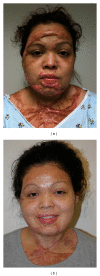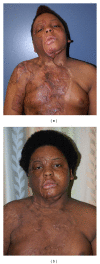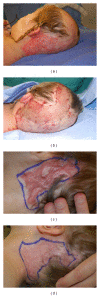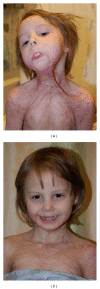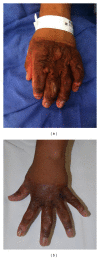Shine on: Review of Laser- and Light-Based Therapies for the Treatment of Burn Scars
- PMID: 22778719
- PMCID: PMC3388335
- DOI: 10.1155/2012/243651
Shine on: Review of Laser- and Light-Based Therapies for the Treatment of Burn Scars
Abstract
Restoration of form and function after burn injury remains challenging, but emerging laser and pulsed light technologies now offer hope for patients with hypertrophic scars, which may be associated with persistent hyperemia, chronic folliculitis, intense pruritis, and neuropathic pain. In addition to impairing body image, these scars may limit functional recovery, compromise activities of daily living, and prevent return to work. Three different platforms are now poised to alter our reconstructive algorithm: (1) vascular-specific pulsed dye laser (PDL) to reduce hyperemia, (2) ablative fractional CO(2) laser to improve texture and pliability of the burn scar, and (3) intense pulsed light (IPL) to correct burn scar dyschromia and alleviate chronic folliculitis. In this paper, we will provide an overview of our work in this area, which includes a systematic review, a retrospective analysis of our preliminary experience, and interim data from our on-going, prospective, before-after cohort trial. We will demonstrate that laser- and light-based therapies can be combined with each other safely to yield superior results, often at lower cost, by reducing the need for reconstructive surgery. Modulating the burn scar, through minimally invasive modalities, may replace conventional methods of burn scar excision and yield outcomes not previously possible or conceivable.
Figures
References
-
- Berman B, Viera MH, Amini S, Huo R, Jones IS. Prevention and management of hypertrophic scars and keloids after burns in children. Journal of Craniofacial Surgery. 2008;19(4):989–1006. - PubMed
-
- Donelan MB, Parrett BM, Sheridan RL. Pulsed dye laser therapy and z-plasty for facial burn scars: the alternative to excision. Annals of Plastic Surgery. 2008;60(5):480–486. - PubMed
-
- Parrett BM, Donelan MB. Pulsed dye laser in burn scars: current concepts and future directions. Burns. 2010;36(4):443–449. - PubMed
-
- Kono T, Erçöçen AR, Nakazawa H, Nozaki M. Treatment of hypertrophic scars using a long-pulsed dye laser with cryogen-spray cooling. Annals of Plastic Surgery. 2005;54(5):487–493. - PubMed
Grants and funding
LinkOut - more resources
Full Text Sources

